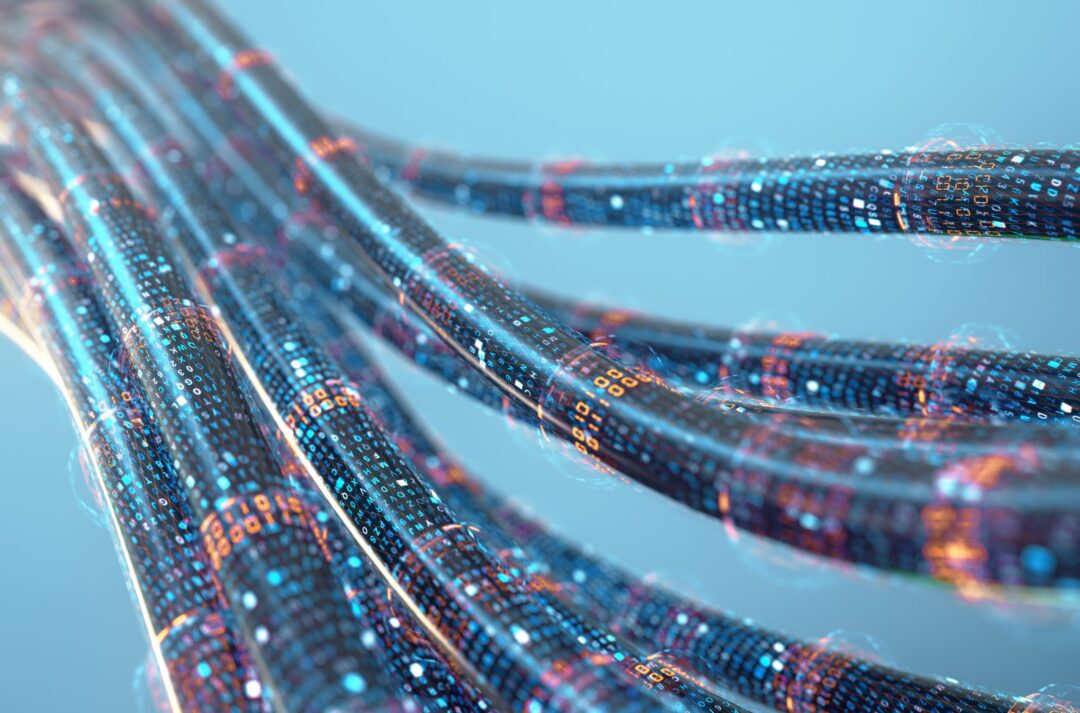Ever since the hi-fi war began with the first tape recorder in the 1930s, the sound quality of music has only improved. This is due to ever better recording and playback equipment as well as better knowledge of its use. When the CDs came out in the 1980s, many people thought the sound was perfect.
Then came the MP3 format and ruined it all. The format was developed in the 1990s and was originally intended for use as a soundtrack on compressed video, but it also came to stand on its own two feet as a music format. It could be compressed down to a tenth of the space required by CD quality and still sound okay. And it was needed back then due to slow internet and pigsty storage space.
So when the music streaming service Spotify became the start of a revolution in 2009, it was not surprising with rather heavily compressed sound. Initially about 96 kbit/s for free subscribers and 256 kbit/s for paying. Fine enough, as broadband in Norway at that time was defined as internet speeds above 640 kbit/s, while the rest of the EU believed that the limit went at anything above 256 kbit/s.
Call for better sound
But that changed quickly, and already in 2012, I had my first discussion about whether or not it was time to get proper sound quality from the music streaming services. It was with my colleague Peter Gotschalk, where I myself thought it was idiotic that one could not even buy downloaded music with uncompressed sound quality.
But Peter just snorted: “If Geir got his way, then it’s not good to know how much it would cost to subscribe to services like Spotify, WiMP or Music Unlimited. More than I would like to pay at least.” Fast forward to today and the mass market has given Peter the right.
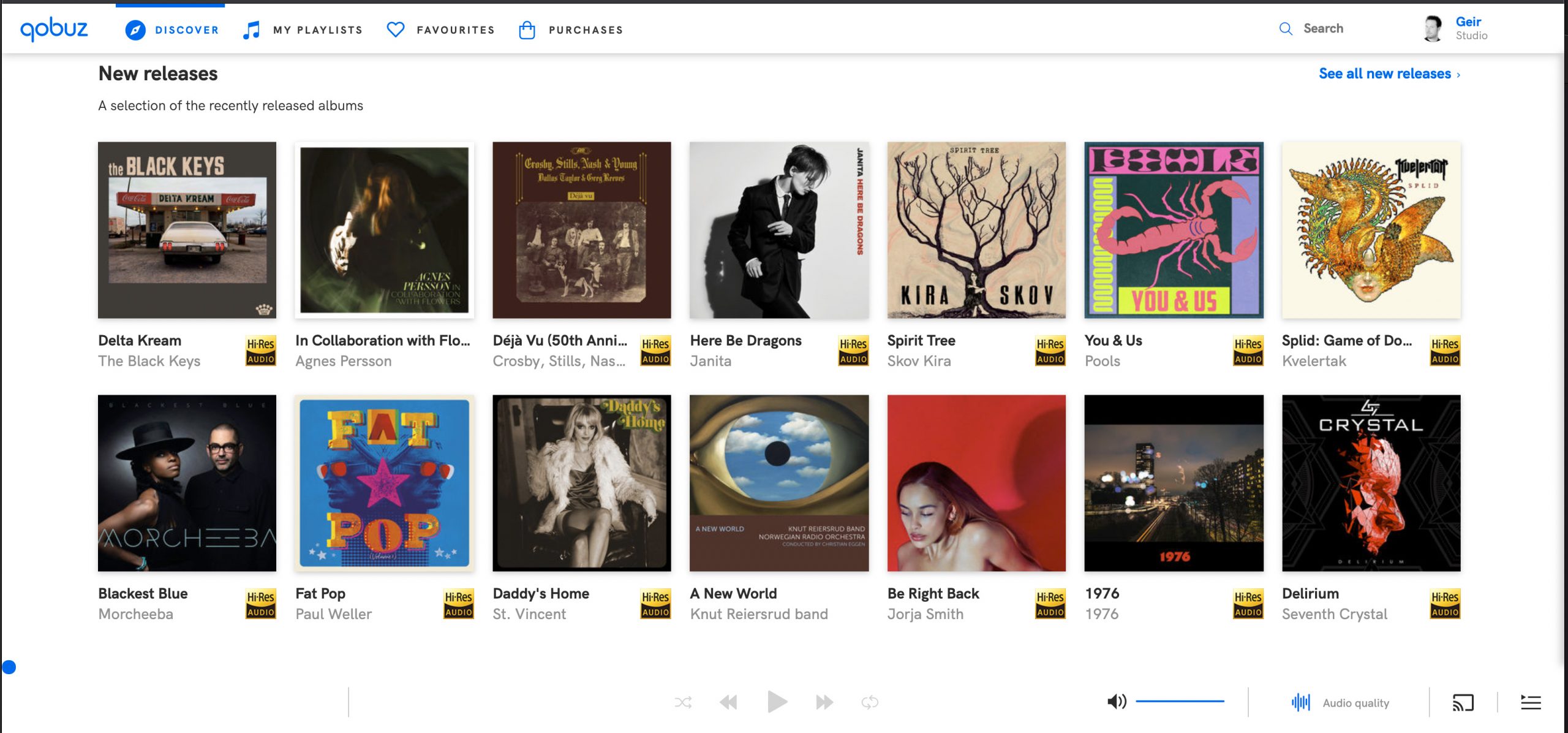
Qobuz
However, there is no shortage of offers. The French music service Qobuz has been offering CD-quality streaming to a small niche market since 2008, with the option to purchase high-resolution music for download.
In recent years, it has also been possible to stream high-resolution sound up to 192 kHz. This is done in the FLAC format, which compresses data to fill less, but without losing data when unpacked again at the other end. This year, the service opened the borders to also include the Nordic region. To great applause from hi-fi enthusiasts, including us at LB Tech Reviews.
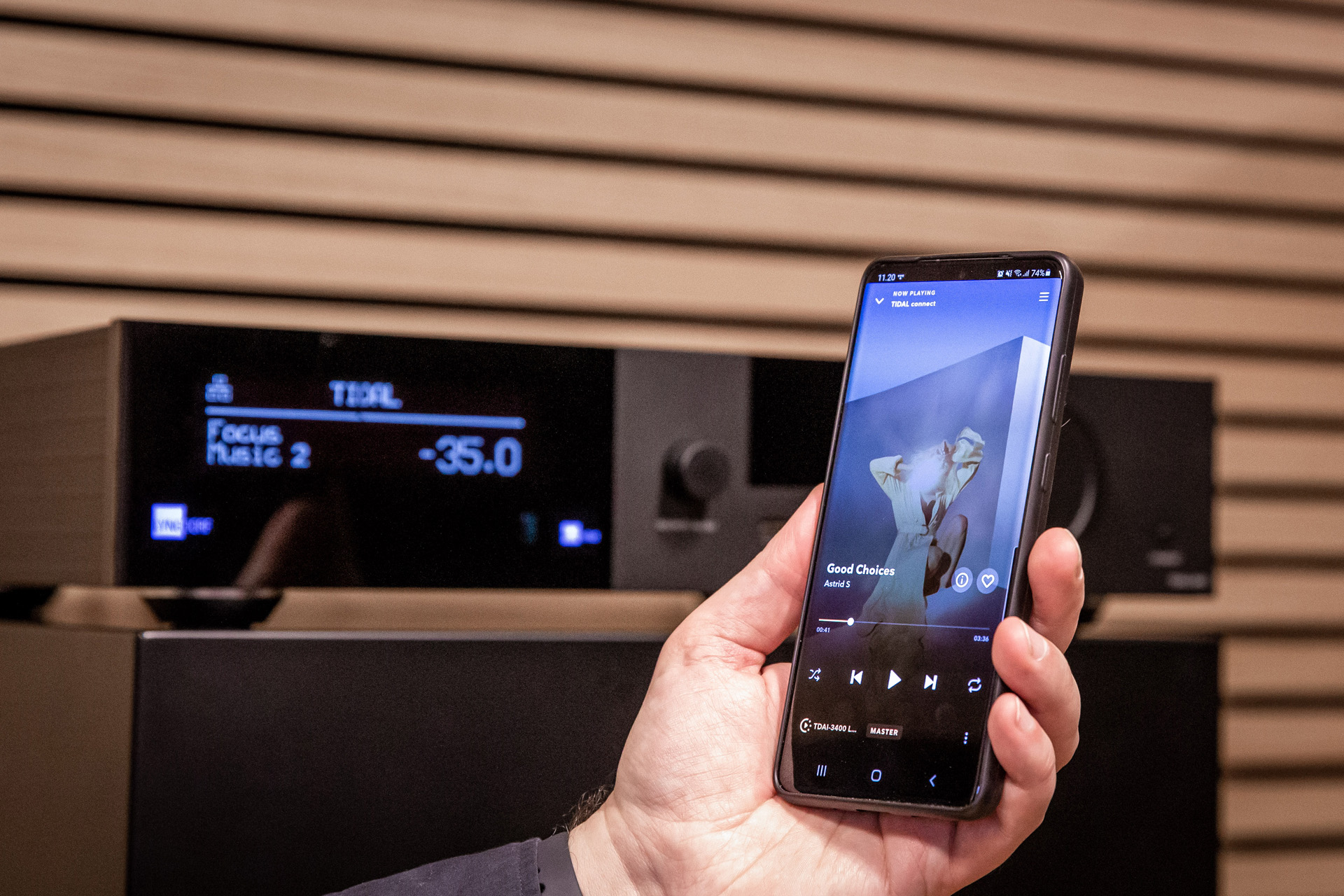
Tidal
The Norwegian music service WiMP gave us the opportunity to stream in true CD quality already in 2013. The service later changed its name to Tidal, and in 2017 they launched music in “studio quality”, ie better than CD.
The audio format that Tidal uses is MQA, which was developed under the direction of Bob Stuart, the founder of the high-end manufacturer Meridian. It is a proprietary music format that is not without controversy. Because while the debate about high-resolution sound is about whether one can hear the difference (it is!), the debate about MQA is about whether the format can be called high-resolution at all.
What is put in by data is not the same as what comes out again, and technically it can therefore not be called lossless. The MQA itself claims that it can rightly be called loss-free because what has been removed cannot be heard anyway.
But MQA is very secretive about how the format works, and when a musician documented on YouTube what happened to his music files after converting to MQA during upload to Tidal, the company did not respond again by taking the debate as ordinary people would. No, they removed his music files from Tidal instead.
It did not go unnoticed, and Neil Young himself is one of the artists who in protest has removed almost his entire catalog from the service.
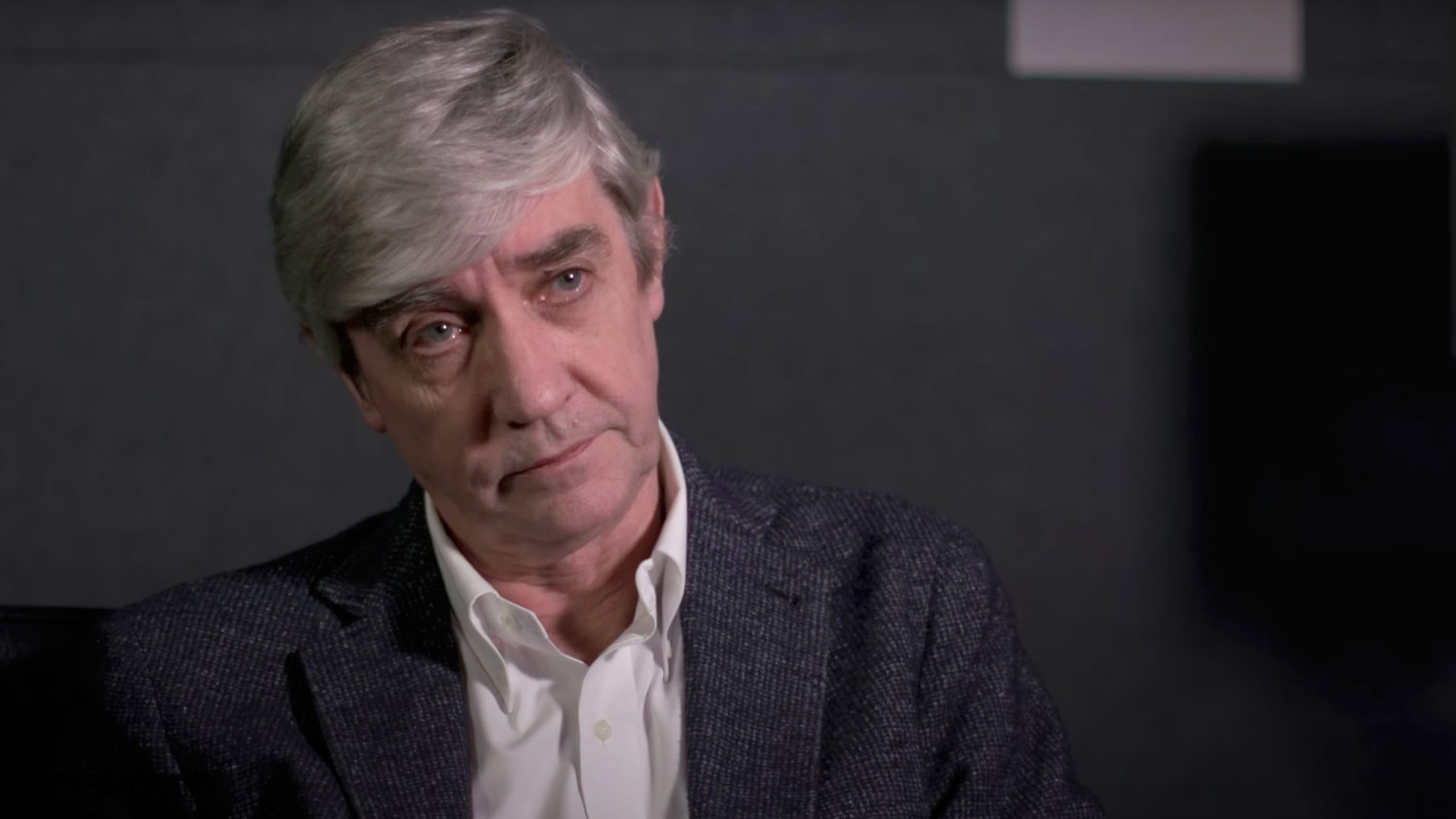
Deezer
As an alternative to Tidal and Qobuz, in 2015 Deezer began offering lossless music quality to Sonos owners in the form of the Deezer Elite service. It was renamed the Deezer HiFi in 2017 and is now offered for all products with built-in Chromecast. We emphasize that this is about CD quality and not higher resolutions.
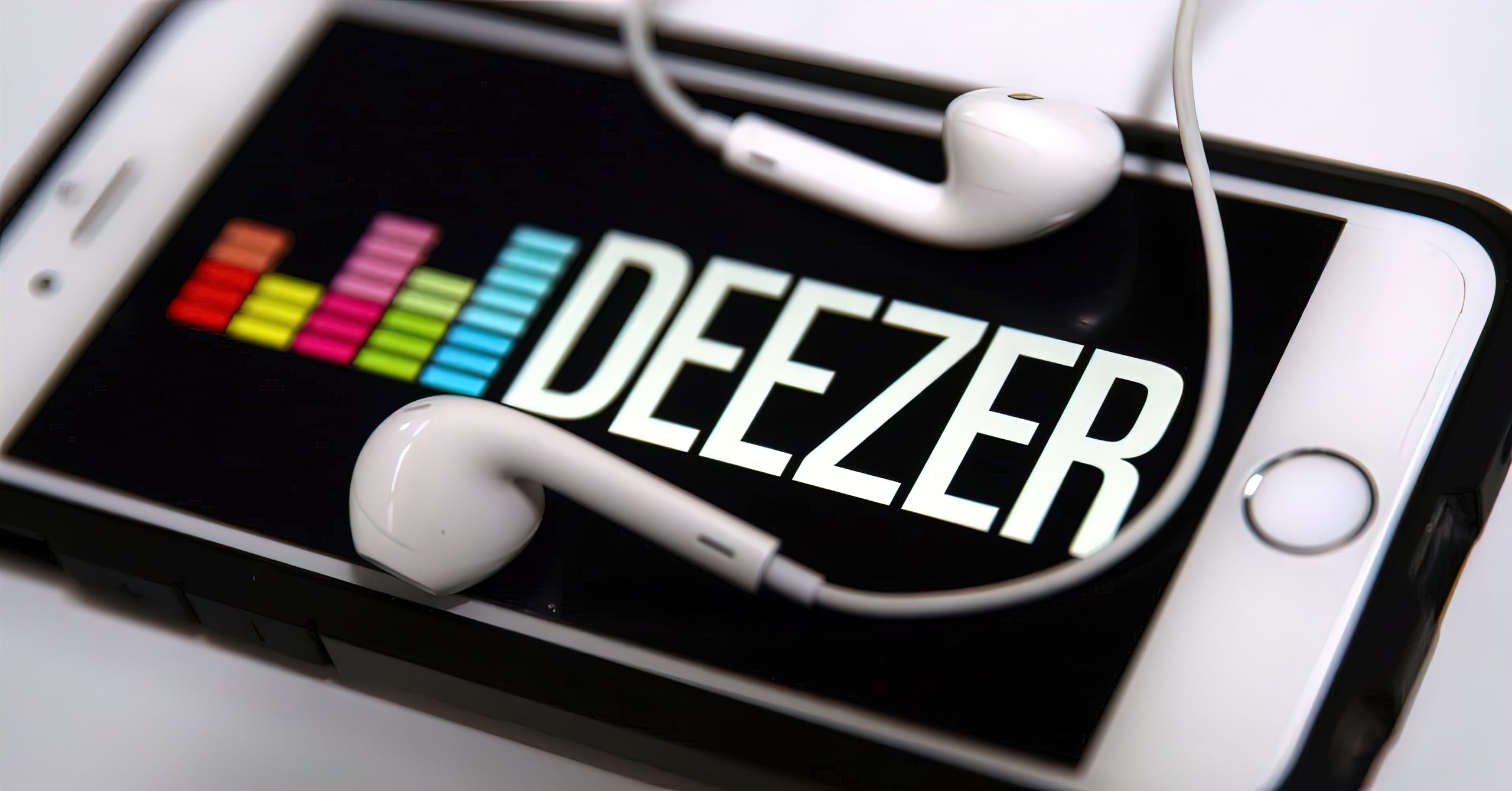
Deezer
As an alternative to Tidal and Qobuz, in 2015 Deezer began offering lossless music quality for Sonos owners, with the Deezer Elite service. This was renamed Deezer HiFi in 2017 and offered for all products with built-in Chromecast. We emphasize that this is CD quality, and not higher resolutions.
Do consumers care?
The debate about streaming, CD quality and high-definition music has probably gone over the heads of the masses anyway. Because whether hi-fi enthusiasts are split between services like Tidal and Qobuz, the numbers speak their clear language about what most people listen to.
Spotify was able to report 158 million paying subscribers in the first quarter of this year, while Apple Music’s latest official figure (June 2019) was 60 million, which is expected to have grown to just over 100 million today. YouTube Music, which also offers compressed audio, had 30 million paying subscribers per year. October 2020.
By comparison, Deezer had seven million paying subscribers in 2019, and Tidal had three million users in March 2016 (we do not have newer figures). Qobuz had 200,000 (!) In 2019. In other words, no consumers seem to care.
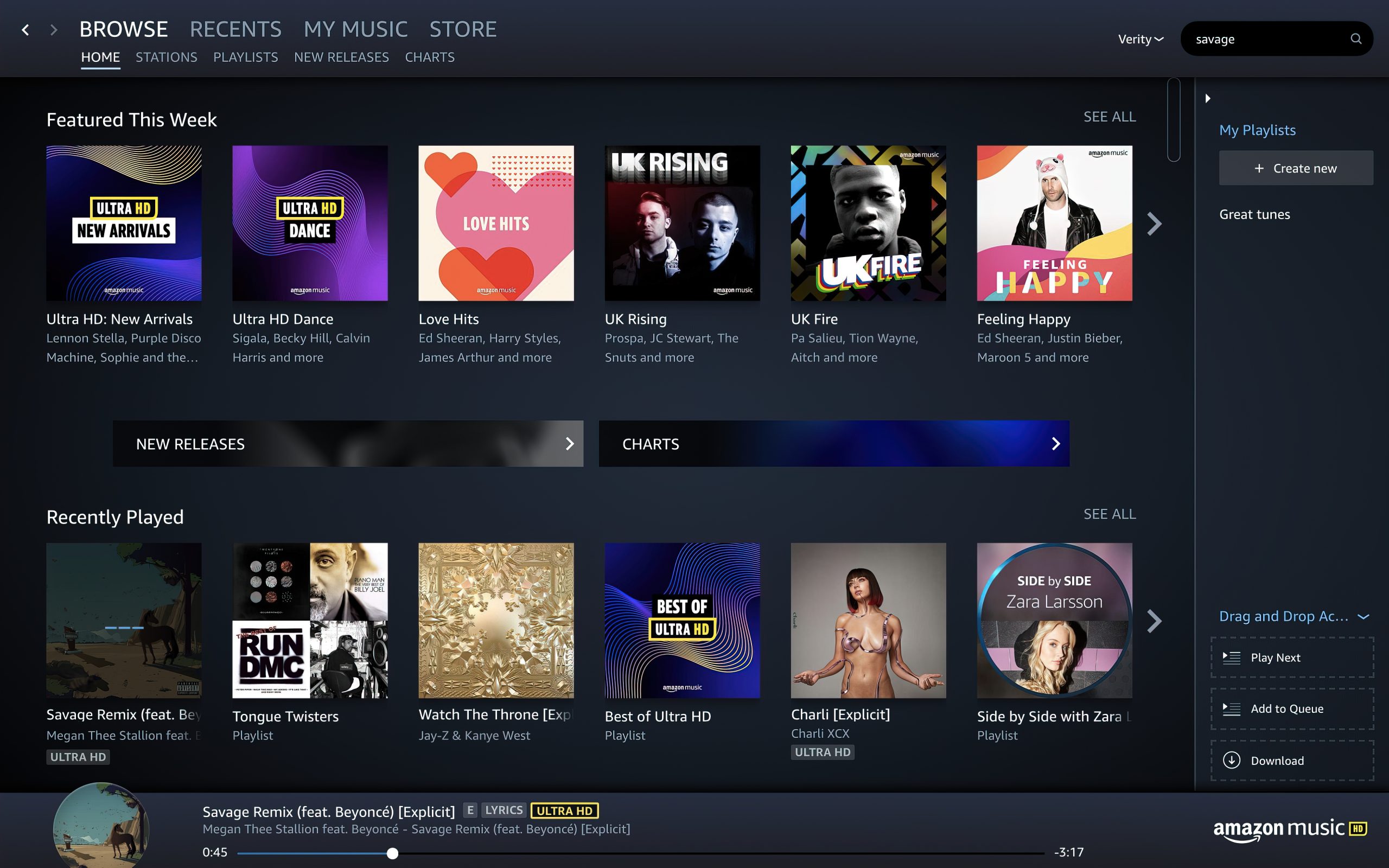
Now comes the rest!
Or do they? Amazon Music might tell a different story. The service, which offers music in both CD quality and higher, had 55 million paying users in January 2020. We do not know how many of them were HD subscriptions. But today, you no longer have to pay extra for Amazon’s HD subscription.
This means that Amazon now has the market’s cheapest music streaming subscription with HD audio, for approx. $10 a month. But unfortunately the service is not available on all markets.
Now the big services are finally following! And would they do it if they did not think it was important?
Spotify has announced that they will launch a hi-fi subscription with lossless CD quality later this year. No mention of high definition, but true CD quality (16 bit/44.1 kHz) is a big step up from the compressed sound they give us now (256 kbit/s Ogg-Vorbis).
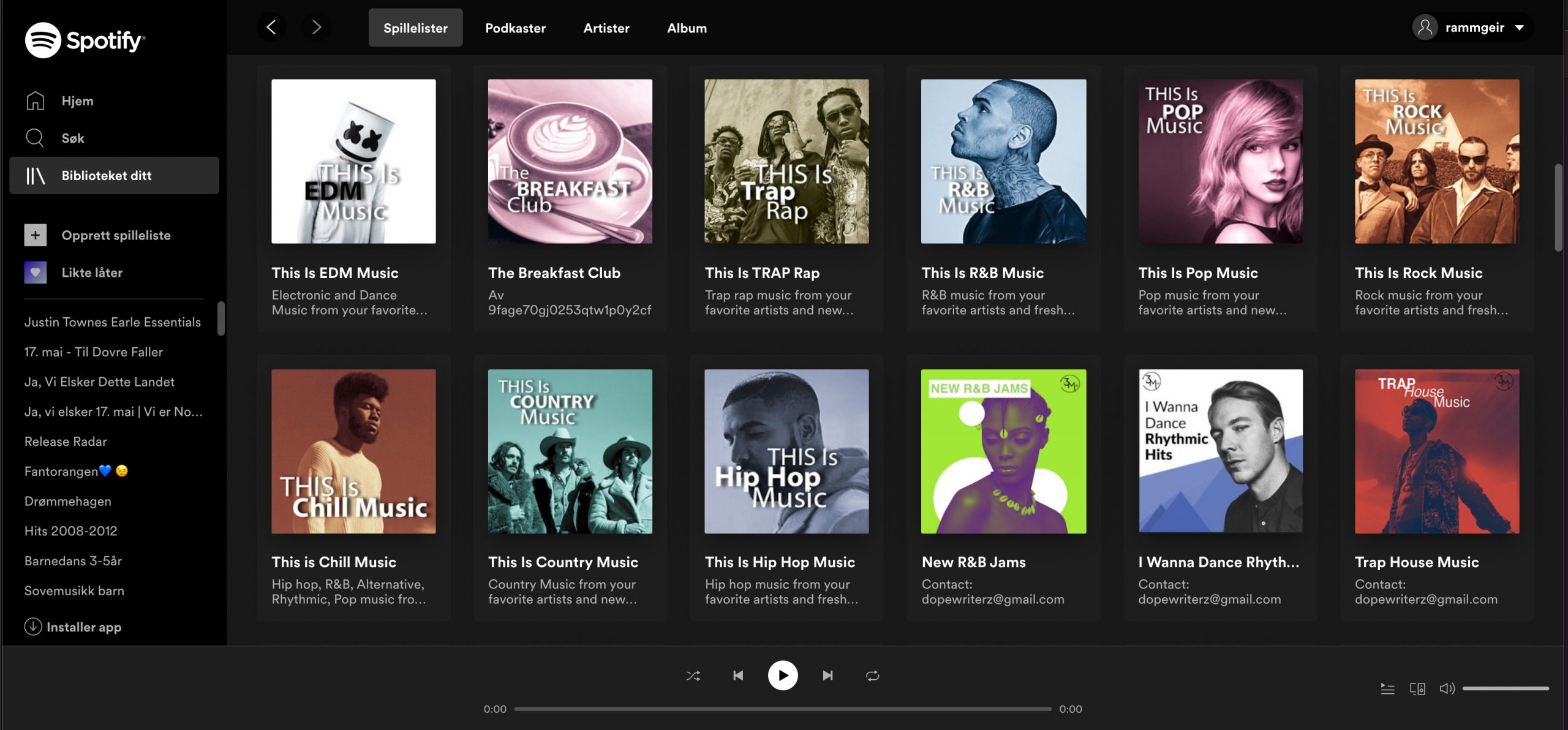
Apple has also confirmed that they are on their way with high definition music. In early June, the Apple Music library will be updated with lossless audio in ALAC (Apple Lossless) format. In addition, there is support for music with Dolby Atmos, which provides 3D sound with headphones from either Apple or Beats. This is done automatically for the subscribers, at no extra cost.
Apple will also offer a more expensive Hi-Resolution Lossless subscription, which provides high-resolution audio up to 24 bit/192 kHz.
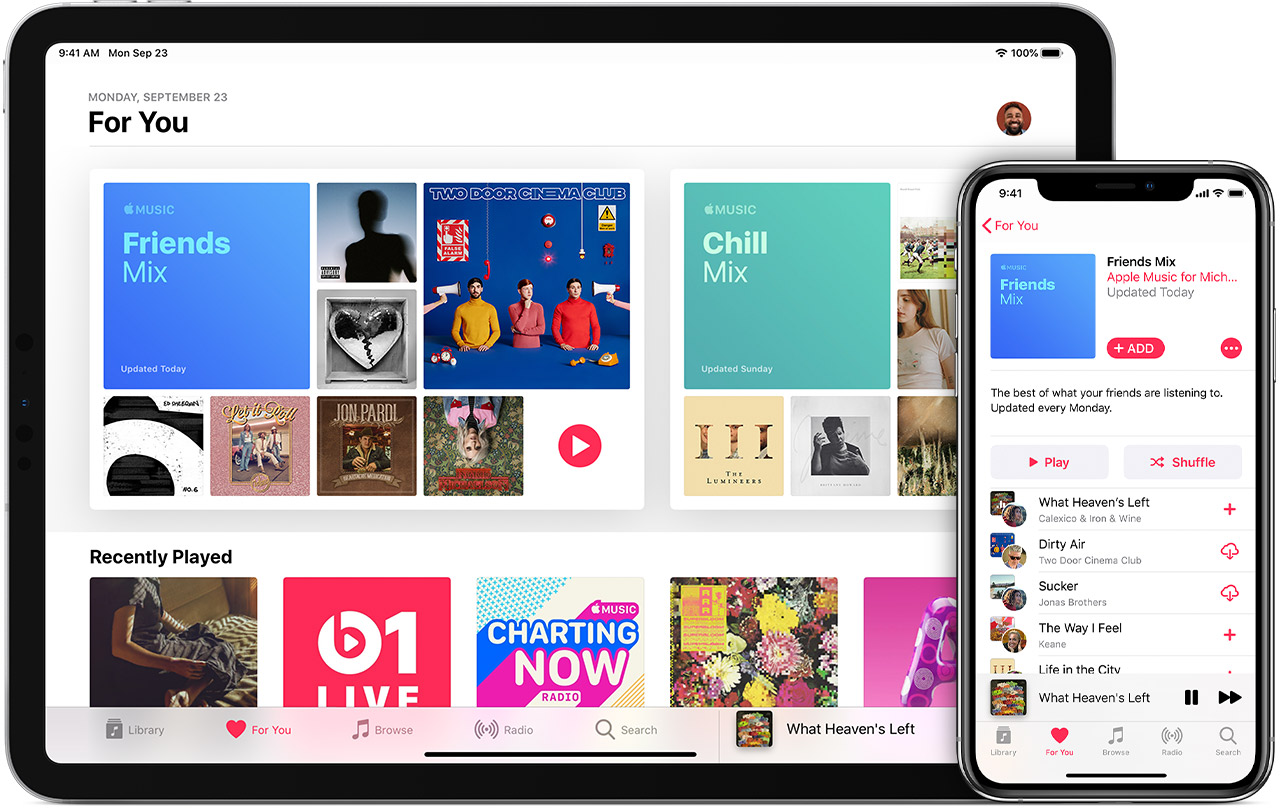
The future looks bright
In other words, it looks brighter for high quality music in the near future. Finally, we can say that the quality is improving after a long break with compressed sound. Then we can hopefully end the discussion about sound quality for now and instead choose the music service that has the user interface and the content we like best.
The question is what will happen to the smaller niche services when the giants are likely to attract their customers. Let us hope that diversity prevails!
Audio formats and bit streams: What are the differences?
You hear a lot about low-resolution and high-resolution audio formats, bit-streams and compression with and without data loss. What are the differences – and what does it all mean?
Typical music streaming services like Spotify, YouTube Music and Apple Music offer music with a data stream of up to 128 to 320 kbit/s. 128 kbit/s is an emergency solution for mobile use, while 256-320 kbit/s is considered good. It can be difficult to tell the difference between the latter and uncompressed CD quality.
Uncompressed CD quality means a resolution of 16 bit/44.1 kHz, which results in a fairly large data stream of 1411 kbit/s. Almost five times more data than the highest resolution offered by the major music services. If you want high-definition audio, you need even more bandwidth. Typically we are talking about 24 bit/96 kHz (4608 kbit/s) or 24 bit/192 kHz (9216 kbit/s).
To reduce the data flow, you can use compression, which is available in two versions, namely with and without data loss.
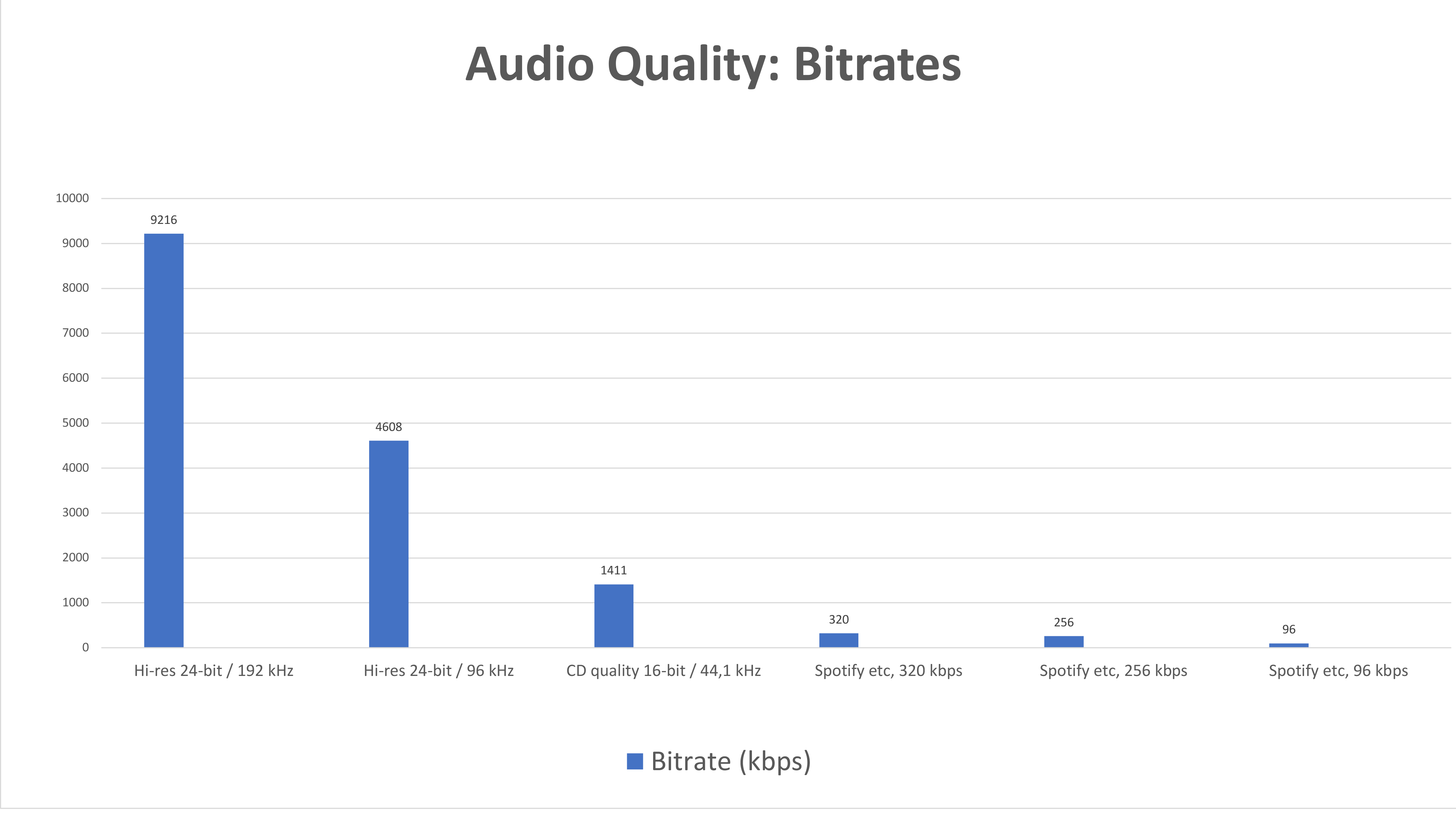
MP3/AAC/Ogg
There are many audio codecs that compress the audio with data loss as a result, and this applies to the vast majority of music streaming services. So far, Spotify delivers a maximum of 320 kbit / s Ogg Vorbis, while YouTube Music and Apple Music both offer up to 256 kbit / s AAC.
The codecs used are not the same, but the goal is the same: You remove the parts of the soundscape that you think the human ear can not perceive anyway. This is done using a carefully calculated psychoacoustic algorithm, but that kind of compression will always result in more or less audible artifacts. The higher the bit rate, the less compression – and thus better sound quality.
FLAC/ALAC
Audio formats that compress data without loss ensure that data is intact when unpacked at the other end. Examples of such formats are ALAC (Apple Lossless Audio Codec) and FLAC (Free Lossless Audio Codec). The latter is mostly used because it is open source and thus free.
All music services that offer CD quality use one or both of the two codecs, which on average require approx. 60 percent of the bandwidth for uncompressed formats. Qobuz is one of the few services that also has high-definition audio in FLAC format.
MQA
A third format is MQA, which compresses the sound in a different way. In addition to FLAC’s lossless compression of everything up to CD quality, the remaining data is compressed in high-resolution audio with a rather heavy loss as a result. The result is that whether the music is recorded in 44.1 kHz or 768 kHz, the required bandwidth will be approximately the same (approximately 1000 kbit/s).
The loss that occurs in compression has resulted in an ongoing debate about whether MQA can be called high-resolution at all. Tidal is so far the only music streaming service using MQA.
You will need it to stream in high definition
It’s not just subscribing to a high definition music service and then believing you are getting high definition sound. If your music listening is usually done through a pair of Bluetooth wireless headphones, do not think about it. You get compressed audio in any case and will not get any benefit from streaming in CD quality or higher.
If you want to stream music of higher quality than CD, you may need to invest in some extra equipment. If you have speakers with built-in Chromecast, you can get up to 24 bit/96 kHz resolution wirelessly from mobile or PC.
There are also mobile headphone amplifiers with built-in DAC that let you play music with this resolution directly from the mobile. Most multi-room speakers also support 96 kHz, but interestingly, Apple does not support high-definition wireless audio. Hopefully it will come later.
Sonos has not opened up for high definition streaming either. But high-definition audio is now supported via the HDMI connection on their soundbars and amplifiers, and we expect it to be only a matter of time before music streaming follows.
If, on the other hand, you want to play music at an even higher resolution, e.g. 192 kHz, it requires external equipment. The most secure solution is a high-resolution DAC connected to a PC or Mac with USB and connected to a high-quality hi-fi system.
It’s not just subscribing to a high definition music service and then believing you are getting high definition sound. If your music listening is usually done through a pair of Bluetooth wireless headphones, do not think about it. You get compressed audio in any case and will not get any benefit from streaming in CD quality or higher.
If you want to stream music of higher quality than CD, you may need to invest in some extra equipment. If you have speakers with built-in Chromecast, you can get up to 24 bit / 96 kHz resolution wirelessly from mobile or PC.
There are also mobile headphone amplifiers with built-in DAC, which let you play music with this resolution directly from the mobile. Most multi-room speakers also support 96 kHz, but interestingly, Apple does not support high-definition wireless audio. Hopefully it will come later.
Sonos has not opened up for high definition streaming either. But high-definition audio is now supported via the HDMI connection on their soundbars and amplifiers, and we expect it to be only a matter of time before music streaming follows.
If, on the other hand, you want to play music at an even higher resolution, e.g. 192 kHz, it requires external equipment. The most secure solution is a high-resolution DAC connected to a PC or Mac with USB and connected to a high-quality hi-fi system.
